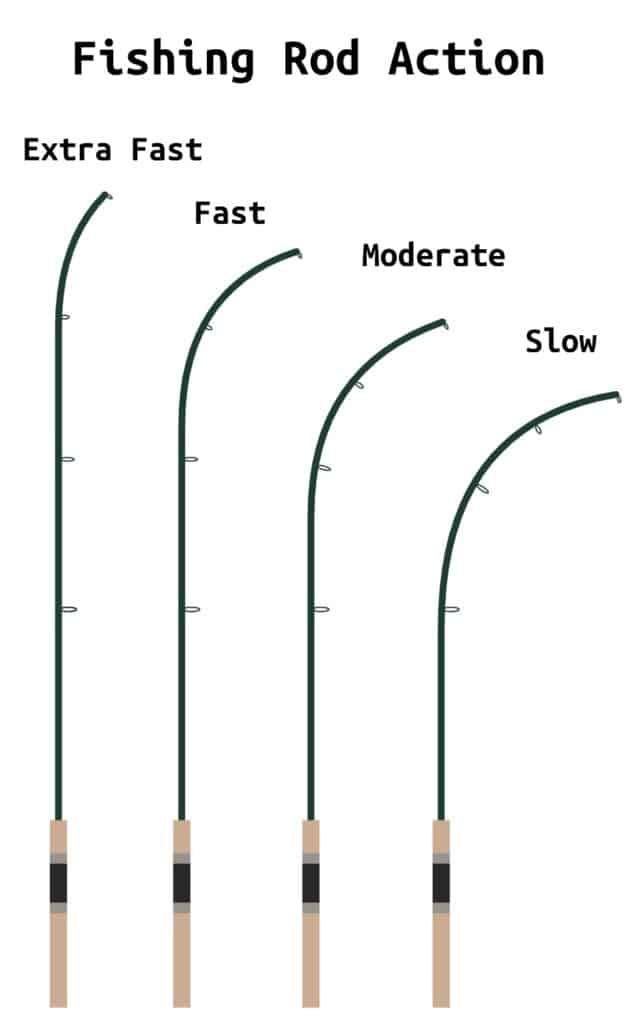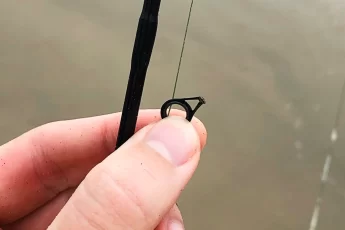
The core component of any fishing rod is the rod blank. The materials, shape, taper, and thickness of the blank significantly affect rod power and action. Choosing rod blanks appropriate for your desired fishing style is critical to having a comfortable, effective angling session.
This comprehensive guide provides an in-depth look into the various types of rod blanks, factors to consider when choosing rod blank materials, advancements in rod blank technology, and how to choose a rod blank that is best for you.
*Disclosure: I only recommend products I would use myself and all opinions expressed here are my own. This post may contain affiliate links that at no additional cost to you, I may earn a small commission.
Table of Contents
- What are Fishing Rod Blanks?
- Types of Rod Blank Materials
- Graphite (Carbon Fiber)
- Fiberglass
- Composite
- Factors to Consider When Choosing Rod Blank Materials
- Fishing Style
- Rod Action and Power
- Maintenance and Care
- Budget Rod Blanks
- Advancements in Rod Blank Technology
- How to Choose the Best Rod Blank for You
- Conclusion
What are Fishing Rod Blanks
Fishing rod blanks are the long, cylindrical, backbones of fishing rods. Rod blanks determine how the rod will bend and how much power it can exert when casting or fighting a fish. They come in various materials, lengths, diameters, and tapers, each tailored to specific types of fishing. In essence, the rod blank is the central piece that dictates the performance and suitability of a fishing rod for different fishing scenarios and techniques.
Types of Rod Blank Materials
Rod blank materials are primarily graphite (carbon fiber), fiberglass, or composite.
Graphite (Carbon Fiber)
Graphite, also known as carbon fiber, is the most popular material in modern fishing rod construction due to its exceptional sensitivity and light weight for its strength. The light weight nature of graphite rod blanks makes them the most sensitive blanks available. With this light weight comes some tradeoffs. Graphite blanks are comparatively brittle and minor nicks or scratches can significantly lower the structural integrity of a rod blank.
Carbon fiber blanks tend to have faster actions where the rod bends closer to the tip which makes the rod feel more sensitive.
Graphite rod blanks are popular for nearly all types of fishing. Notable exceptions include trolling and targeting the largest fish where material strength is valued over sensitivity.
Fiberglass
Fiberglass rod blanks are known for their durability and flexibility, making them a great choice for trolling or for those targeting heavy, fighting fish. These blanks are generally heavier and more flexible than graphite, which results in a slower action. This means the bend in the rod is more uniform throughout its length, offering a good balance of power and giving during a fight with a fish. Fiberglass rods are less sensitive compared to graphite rods but their toughness and ability to withstand rough handling make them a popular choice for trolling and targeting huge fishing.
Composite
Composite rod blanks combine the best qualities of both graphite and fiberglass, offering a balance between sensitivity and durability. These blanks are constructed by blending fiberglass and graphite materials, allowing anglers to exploit the lightweight and responsive nature of graphite while benefiting from the toughness and flexibility of fiberglass. This makes composite rods extremely versatile, suitable for a wide range of fishing conditions and styles. They are particularly favored by anglers who need a multi-purpose rod that can handle various fishing scenarios without compromising on performance.
Factors to Consider When Choosing Rod Blank Materials
In this section, we look into the key factors you should consider when choosing the material for your fishing rod blank. We’ll explore how your fishing style, the desired rod action and power, and the importance of maintenance and care can guide you in making an informed decision, ensuring you pick a rod that suits your fishing needs. I will also touch on what to watch out for at different rod price points.
Fishing Style
The choice of rod blank material should align with your specific fishing style, as different materials cater to different fishing needs. For instance, if you’re into fly fishing or bass fishing, where sensitivity and the ability to make precise casts are crucial, a graphite rod blank would be ideal due to its lightweight and stiff nature. Alternatively, if your focus is on trolling or deep-sea fishing, where durability and strength are key, fiberglass rod blanks would be more suitable. For those who engage in a variety of fishing styles, composite rod blanks offer a versatile solution, blending the sensitivity of graphite with the toughness of fiberglass.
Rod Action and Power
Rod action and power are critical factors influenced by the material of the rod blank.
Action
Rod action, which refers to where the rod bends when pressure is applied, can range from slow (bending throughout the length of the rod) to fast (bending near the tip). Graphite rods typically offer faster actions that while fiberglass rods usually provide slower actions.

I usually choose a rod action based on the fishing technique. Here’s a short list of my general rod action recommendations:
- Jigging: Fast to Extra Fast Action
- Ideal for precise movements, sensitivity, and quick hook sets.
- Spinnerbaits: Fast Action
- Offers a balance between flexibility for casting and stiffness for control.
- Topwater Fishing: Fast Action
- Provides the necessary responsiveness for working topwater lures effectively.
- Crankbaits: Moderate Action
- Increased rod flex gives crankbaits a more natural movement.
- Trolling: Moderate Action
- Sensitivity is not a concern. Moderate action puts more ‘give’ into the system and acts like a shock absorber for fish strikes
- Fishing with Soft Plastics: Fast Action
- Offers sensitivity for detecting subtle bites and power for hook setting.
- Surf Fishing: Moderate to Fast Action
- Softer actions allow for increased casting distance.
Power
Power, or the rod’s resistance to bending, is also influenced by the blank material. Heavier and more powerful rods, often made from fiberglass, are suited for bigger, stronger fish, whereas lighter, more sensitive rods, typically crafted from graphite, are better for smaller species and lighter lines. Here’s a short list of my general rod power recommendations for different fishing techniques:
- Inshore Fishing (Redfish, Speckled Trout, Flounder): Medium Power
- Good mix of strength and sensitivity for popular inshore species.
- Bass Fishing: Medium to Heavy Power
- Medium power for most bass techniques. Heavy power for specific techniques like topwater frogs or flipping & pitching.
- Deep Sea Fishing (e.g., Tuna, Marlin): Heavy to Extra-Heavy Power
- Panfish Fishing: Ultralight to Medium-Light Power
- Walleye: Medium-Light to Medium Power
- Provides enough sensitivity for feeling jigs and the right amount of backbone for setting hooks. Check out our guide to walleye fishing for more info.
- Surf Fishing: Medium to Heavy Power
- Needed for casting long distances and managing larger fish in challenging surf conditions. Check out our guide to surf fishing for more info.
- Trolling for Salmon or Lake Trout: Medium-Heavy to Heavy Power
- Ensures durability and strength to handle the size and fight of these fish.
Understanding the relationship between rod action, power, and blank material is essential for selecting the right rod for your target species and fishing technique.
Attached to the rod blank are rod guides which also impact sensitivity, power, and rod strength. Check out our deep dive explanation of fishing rod guides for more information on that topic.
Maintenance and Care
The longevity and performance of a fishing rod heavily depend on proper maintenance and care, which varies based on the rod blank material. Graphite rods, being more sensitive and prone to damage from high-stress situations, require careful handling and storage. They should be kept clean, away from direct sunlight when not in use, and checked regularly for nicks or scratches that could lead to breakage. Fiberglass rods are more robust and can tolerate rougher handling, but they still benefit from regular cleaning and inspection for any signs of wear. Composite rods, combining elements of both materials, require a balanced approach to maintenance, ensuring both the sensitivity of the graphite and the durability of the fiberglass are preserved. Regardless of the material, it’s important to rinse rods with fresh water after each use, especially when fishing in saltwater, to prevent corrosion and buildup of debris.
Budget Rod Blanks
While there are certain cases where fiberglass or composite rod blanks are better, I want to note that these blanks are generally cheaper to manufacture than graphite blanks. When looking at budget-friendly rods, read the rod specifications and you’ll frequently notice fiberglass or composite materials. This isn’t necessarily a problem, it just means that the rod material is heavier and less sensitive than a higher-end rod that would likely be graphite.
Most higher end rods are advanced, high-strain carbon fiber. Notable exceptions are deepsea rods and trolling rods that tend to be fiberglass to maximize strength.
Advancements in Rod Blank Technology
Advancements in rod blank technology have significantly transformed the fishing industry, leading to rods that are more efficient, durable, and sensitive. Modern technology has introduced materials like advanced carbon fibers and exotic composites, which have significantly improved the strength-to-weight ratio of rod blanks. Innovations in resin systems have also played a crucial role; new resin formulas enhance the bonding of fibers, increasing the blank’s durability and resistance to stress without adding extra weight. Furthermore, state-of-the-art manufacturing techniques, such as precise computer-aided design and automated cutting, have led to more accurate and consistent rod blanks with improved action and sensitivity. These technological leaps push the boundaries of what can be achieved in rod performance, catering to a wide range of fishing styles and environments.
We recently had the chance to tour St. Croix’s rod manufacturing facility in Park Falls, Wisconsin where they build their top-end rods.

Check out some top examples of cutting-edge rod blank technology from St. Croix Rods:
- Integrated Poly Curve (IPC) Technology
- Eliminates transitional points in the rod blank.
- Results in smoother actions, increased strength, and enhanced sensitivity.
- Advanced Reinforcing Technology (ART)
- Uses exotic carbon fiber material.
- Increases blank strength by tenfold without adding to diameter or weight.
- Improves hoop strength, preventing deformation under heavy loads.
- Essential for slim-profile ferrule design.
- Fortified Resin System (FRS)
- Combines fortified super resin with computer-operated curing ovens.
- Ensures better temperature and time management during curing.
- Aligns carbon fibers properly, increasing blank strength by 33% compared to standard methods.
- Taper Enhancement Technology (TET)
- Utilizes precision-cut, curved blank patterns created by computerized machines.
- When used with IPC mandrels, it leads to improved rod actions and sensitivity.
- Marks a significant shift from traditional straight-line, hand-cut patterns.
How to Choose the Best Rod Blank for You
To choose the best rod blank for you, consider these factors:
- Fishing Style: Your preferred fishing technique should guide your choice. For precision and sensitivity, go for graphite. For strength and durability, choose fiberglass.
- Budget: Balance cost with quality. Higher-priced blanks often offer better performance and durability, but there are also good quality options at moderate prices.
- Rod Action: Fast action rods are ideal for quick hook sets and prioritizing sensitivity, while slower action rods offer more bend and flexibility for fighting fish.
- Rod Power: Match the power to your target fish species and fishing environment.
Conclusion
In conclusion, understanding the differences in fishing rod blanks is important for any angler looking to maximize their fishing experience. Rod blanks are the most important factor that determine rod action and power. Whether you prefer the sensitivity of graphite, the durability of fiberglass, or the versatility of composite materials, the choice of rod blank can significantly impact your fishing success and comfort. By understanding rod blank materials, anglers can pick rods tailored for their fishing style and budget. Also, make sure you match the rod length to the appropriate action and power!
If you liked this article, we recommend our article on how to choose a fishing rod!
For further reading, check out some of our fishing rod recommendation articles that take rod blank materials into consideration:
- Best Bass Baitcasting Rods
- Best Bass Spinning Rods
- Best Beginner Fishing Rods
- Best Inshore Rods
- Best Saltwater Fishing Rods
- Best Surf Fishing Rods
- Best Trolling Rods
- Best Walleye Rods

Written By: Andrew Juran
Andrew is a seasoned angler with over 25 years of experience fishing across the United States. He has caught hundreds of fish using various techniques and mentored many in the art of fishing. An advocate for sustainable fishing, Andrew is an active member of the Coastal Conservation Association, an organization committed to marine conservation.
For frequent fishing tips, behind-the-scenes looks, and real-time catches, connect with Andrew on Instagram






